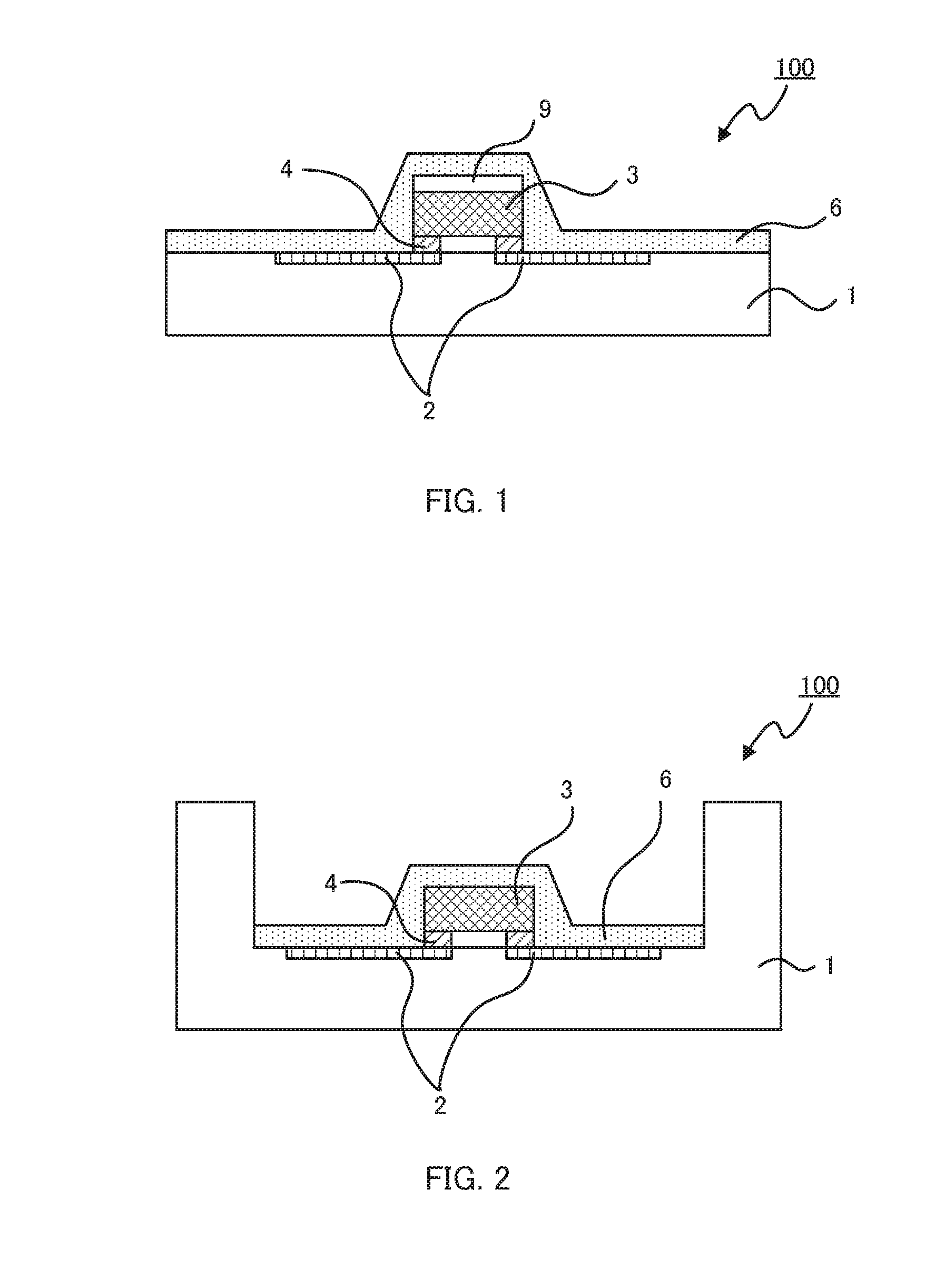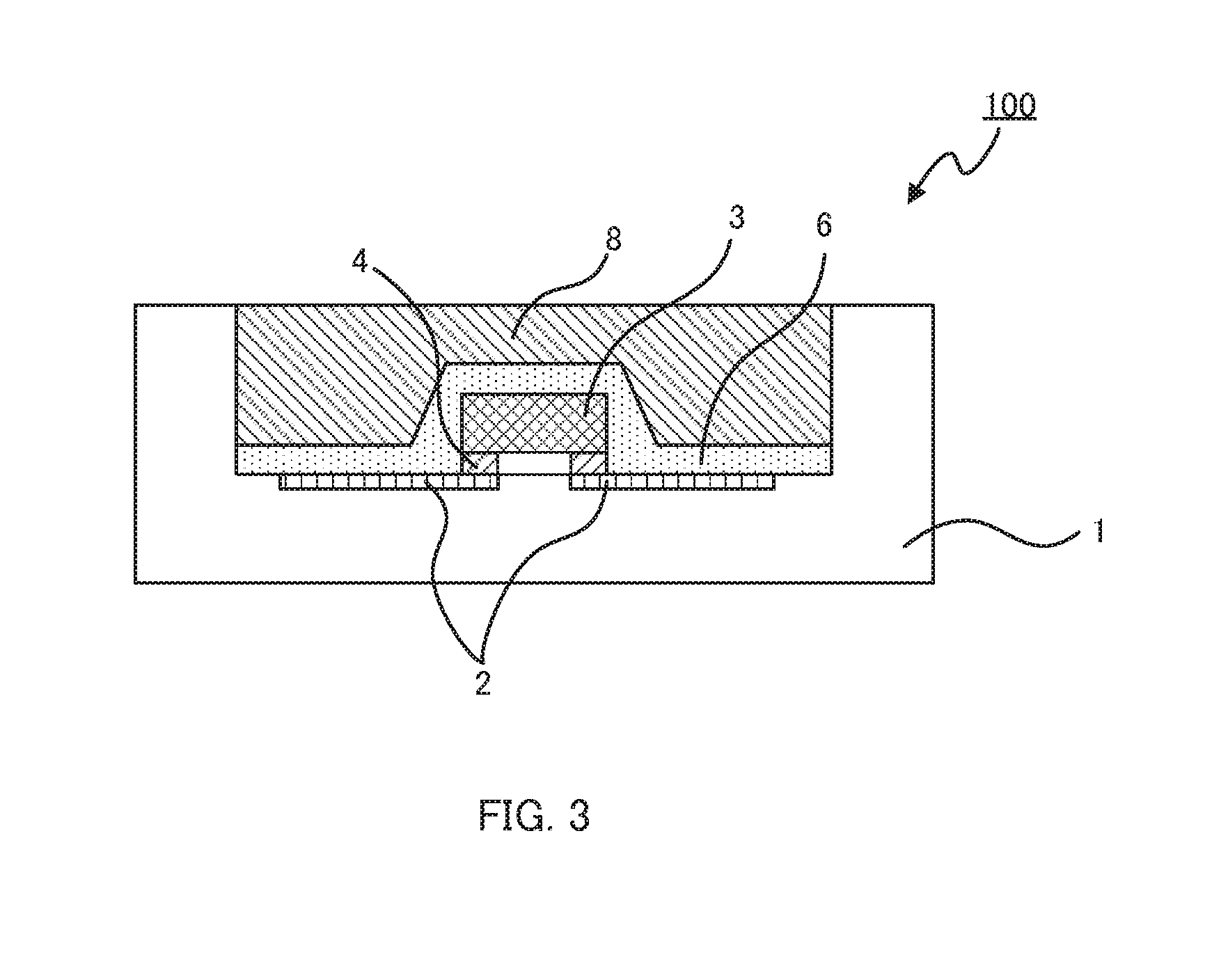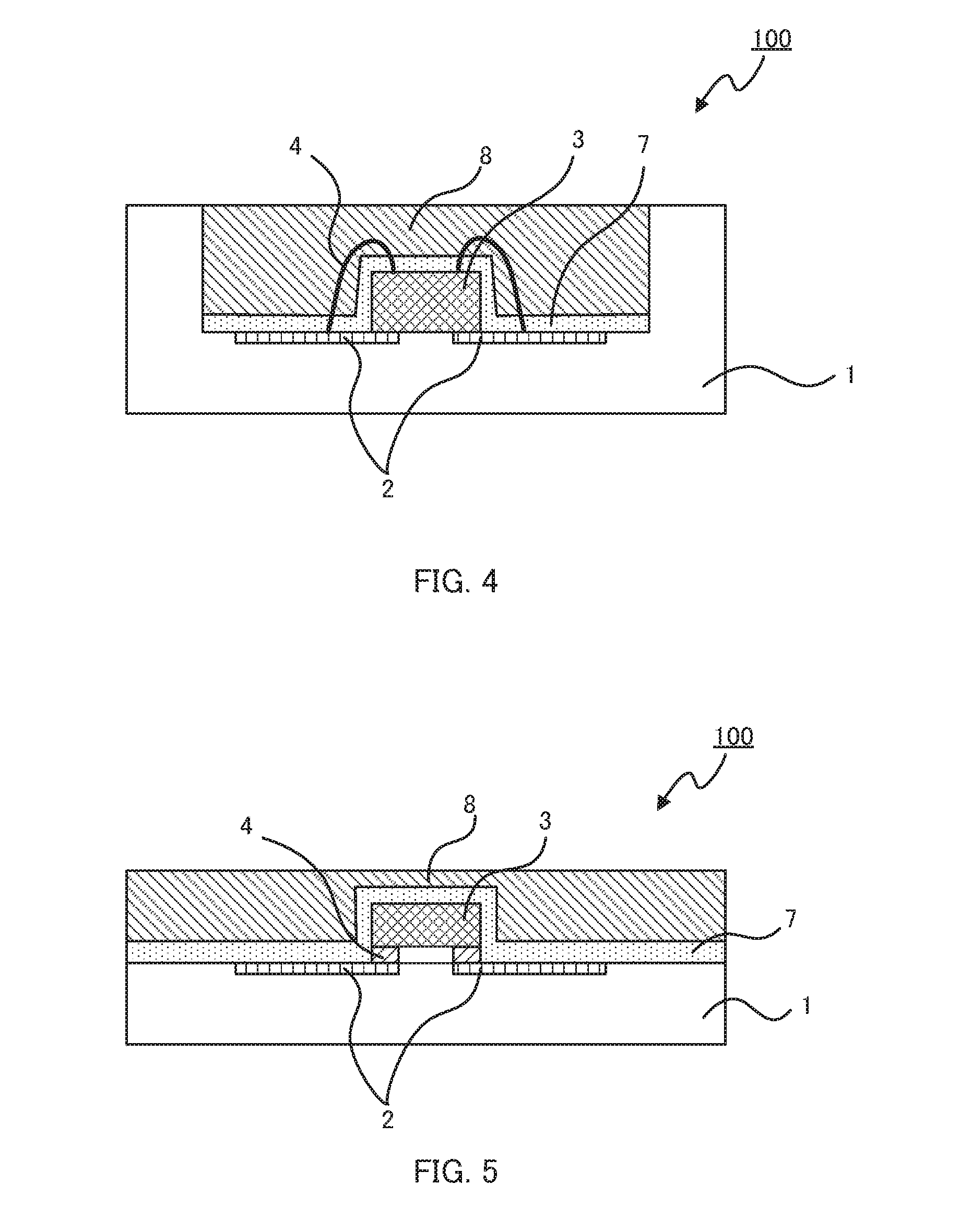Sealant for LED device, LED device, and method for producing LED device
a technology of led devices and sealants, applied in the direction of chemistry apparatus and processes, inks, other chemical processes, etc., can solve the problems of difficult to obtain sufficient outcoupling efficiency, reflection efficiency is reduced, and the outcoupling efficiency is markedly reduced, etc., to achieve excellent adhesion, not easily cracked, and high sulfide gas resistance
- Summary
- Abstract
- Description
- Claims
- Application Information
AI Technical Summary
Benefits of technology
Problems solved by technology
Method used
Image
Examples
example 27
Production of LED Device 1-53
[0379]LED device 1-53 was obtained in the same manner as LED device 1-49 except that 2.0 g of slurry (SZR-M, produced by Sakai Chemical Industry Co., Ltd.) in which ZrO2 fine particles were dispersed was added to a sealant for an LED device.
example 28
Production of LED Device 1-54
[0380]LED device 1-54 was obtained in the same manner as LED device 1-50 except that 2.0 g of slurry (SZR-M, produced by Sakai Chemical Industry Co., Ltd.) in which ZrO2 fine particles were dispersed was added to a sealant for an LED device.
example 29
Production of LED Device 1-55
[0381]LED device 1-55 was obtained in the same manner as LED device 1-51 except that 2.0 g of slurry (SZR-M, produced by Sakai Chemical Industry Co., Ltd.) in which ZrO2 fine particles were dispersed was added to a sealant for an LED device.
PUM
| Property | Measurement | Unit |
|---|---|---|
| particle size | aaaaa | aaaaa |
| thickness | aaaaa | aaaaa |
| wt % | aaaaa | aaaaa |
Abstract
Description
Claims
Application Information
 Login to View More
Login to View More - R&D
- Intellectual Property
- Life Sciences
- Materials
- Tech Scout
- Unparalleled Data Quality
- Higher Quality Content
- 60% Fewer Hallucinations
Browse by: Latest US Patents, China's latest patents, Technical Efficacy Thesaurus, Application Domain, Technology Topic, Popular Technical Reports.
© 2025 PatSnap. All rights reserved.Legal|Privacy policy|Modern Slavery Act Transparency Statement|Sitemap|About US| Contact US: help@patsnap.com



